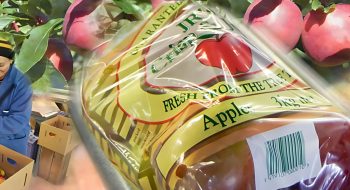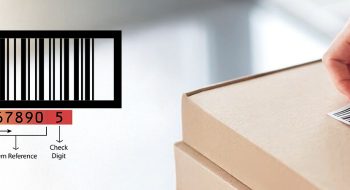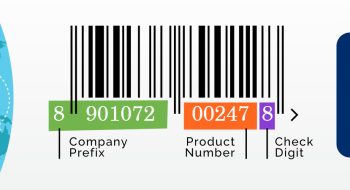End-to-end traceability is the ability to trace all products right from the procurement of raw materials to production, transportation, and consumption. It fosters increased visibility in the supply chain and promotes quick identification and redressal of issues such as delays, quality control, and accountability. Traceability plays an indispensable role in every industry, be it healthcare, FMCG, apparel or energy by empowering them with accurate product details and detailed documentation of the entire product lifecycle. As a result, businesses profit from swift deliveries and process efficiencies.
Regulatory Compliance
Regulators have become extremely stringent and will continue to be so to establish a compliant framework in the industry. This causes immense pressure on the companies as now they have to work under constant regulatory scrutiny. Traceability comes as a rescue to all the companies who have been walking on a tightrope because of this. It allows business owners to provide end-to-end traceability and a complete audit trail of their products. This helps in avoiding any confusion or discrepancies that may occur while in the supply chain cycle, nurturing trustworthy relationships.
Efficiency, Optimization Optimisation & Risk Mitigation
The role of traceability is not limited to encouraging lasting and healthy relationships, but also, in strengthening efficiency, resource optimisation, and risk mitigation at each stage of the supply chain. The data extracted through traceability authorises the business owners to zero on the process incompatibilities and refinement areas. Furthermore, it cultivates a streamlined and transparent approach to managing product details in a centralised database, promptly.
The Importance of Data Integrity
When accurate and real-time data is stored and captured, data integrity will automatically boost. It is no wonder that products whose information is accurate have a higher chance of reaching consumers securely. Traceability captures authentic data right from the source or manufacturer, eliminating product information intermediaries and false information. This motivates business owners to adopt traceability to maintain their product data integrity.
Empowered Consumers
The benefits of traceability for sellers and consumers go hand-in-hand. Access to accurate and authentic product information to the end consumers builds their confidence and trust in the business, boosting business sales. Consumers feel more empowered when their right to information is provided in full without any disruptions. Consumers can know the exact manufacturing place of the product and authenticate the product ingredients or development process.
Product traceability has numerous benefits in the manufacturing industry
- Material and information flow mapping
- Supply chain management
- Conduct in-depth analysis
- Room for continuous improvement
Product traceability provides multiple benefits, some of which are mentioned below –
- Material and information flow mapping – Material and Information flow mapping, also referred to as Value Stream Mapping, is a step-by-step process of bringing goods into the market. This method allows business owners to visualize the steps effectively and eliminate any unnecessary steps that can cause disturbance or delays. Traceability during this mapping is crucial as it provides businesses the information on what and when about the products and helps identify loopholes in the process. You can monitor the operational steps, time, and quality of the products and work on improvements wherever necessary.
- Supply chain management – In the supply chain, the role of traceability is inevitable. You can see the entire product journey on a single platform and raise concerns in case of any disruptions.
- Conduct in-depth analysis – Traceability allows you to have an in-depth analysis of your product journey, starting from the procurement of the raw materials to its consumption by the end consumers. Leveraging traceability you can swiftly navigate through any difficulties and always be prepared for the future.
- Room for continuous improvement – Traceability promotes continuous development in the processes. Business owners can identify problems and work on them when they can trace their products effectively.
Where traceability can come up short – and how to fix it?
Traceability can bring progress in an organisation only when it is leveraged most productively. In any industry, traceability has its loopholes and requires immediate action and assistance failing to which the organisation may have to experience a downhill. To avoid this situation, traceability training at all levels should be made compulsory by organisations. Traceability systems should be regularly audited to prevent or manage any future challenges. In addition to this, it is important to ensure product development and procurement are being done in tandem with consumer needs with the help of traceability.
Conclusion
For any organisation, traceability is a testament to the organisation’s value and product integrity. So, if you are a business owner make sure you have a proper traceability system in place to track your products efficiently and elevate your customer experiences. Ensure your product information reaches the right audience at the right time at the right place with end-to-end traceability.
Frequently Asked Questions
1. How does traceability help in ensuring product quality and safety?
Organisations can trace their product journey hassle-free from a single platform with the help of traceability. This helps in ensuring product safety and quality at different levels of the supply chain.
2. Can traceability be applied to various industries beyond manufacturing?
Traceability can be applied to any service or product industry wherein there is a requirement to track products. As a business owner, you can trace your product’s journey directly from the manufacturing of the product to its consumption.
3. What are the primary challenges in implementing traceability systems?
Achieving interoperability, regulatory compliance, data security, and manual data entry are some of the key challenges organisations face while implementing traceability systems. To avoid such challenges, it is advised to get registered with GS1.
4. How does traceability contribute to regulatory compliance in different sectors?
In different sectors, traceability promotes the visibility of products in the supply chain, ensures product authenticity, and finally contributes to regulatory compliance.
5. What role does technology play in enhancing traceability processes?
Technology is paramount in enhancing traceability processes. 2D barcodes, Radio Frequency Identification (RFID), and blockchain technology are some of the technological advancements that have elevated traceability processes.
6. How does traceability impact sustainability and environmental responsibility?
Traceability directly impacts sustainability and environmental responsibility by helping reduce waste production. It helps to authenticate if the products are made in environment-safe best practices and using safe raw materials.
7. What are the key components of a robust traceability system?
A robust traceability system is one where all the staff members are trained on its application and use. Where no data is fed manually and information consistency is maintained throughout the process.
8. How can businesses leverage traceability to improve inventory management?
With traceability, businesses can know in advance when their stock level is insufficient or when there is a chance of overstocking. This information helps them keep a sufficient inventory level and manage it proactively.









